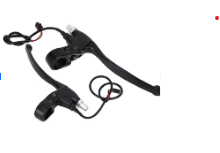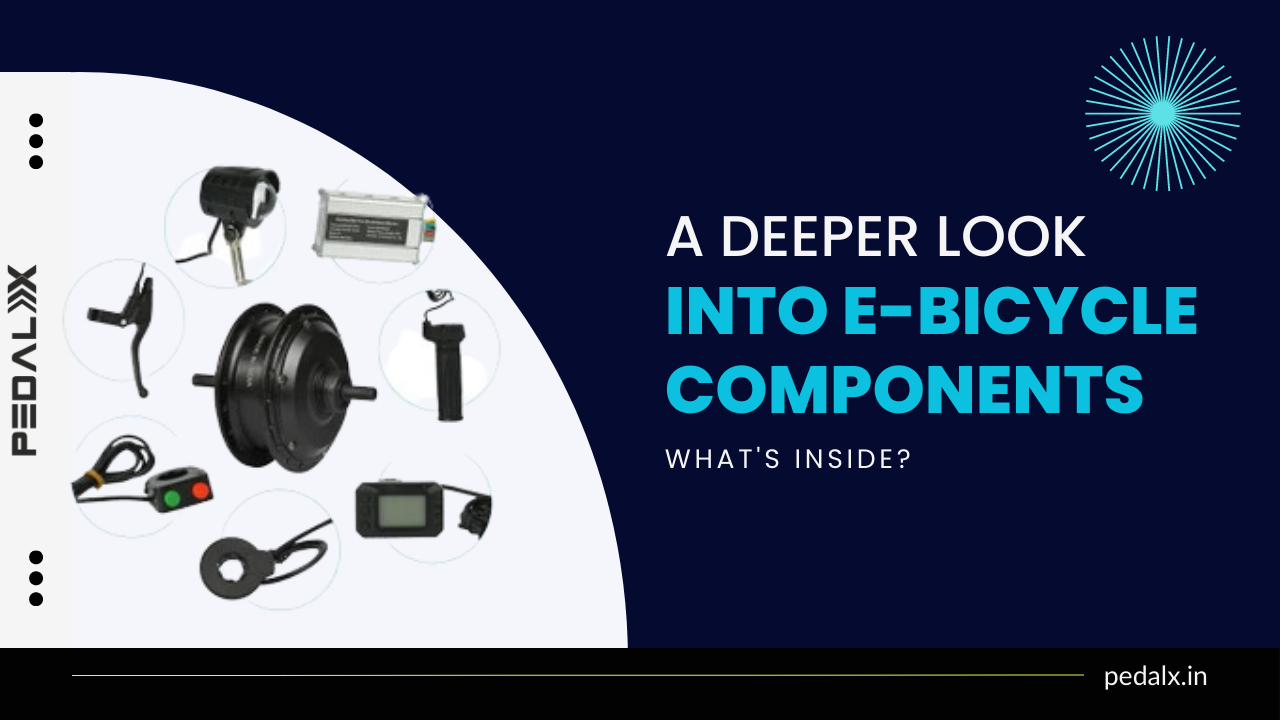Electric bicycles or e-cycles, as known in India are becoming the most treasured part of today’s youngster’s life because it has just enhanced their bicycling experience, the normal pedaling has just got better along with some amazing features. What are those beautiful things that make this beautiful riding experience possible? Let’s have a look inside this wondrous innovation that has captivated youngsters.
Why are e-bicycles popular?
Electric bicycles, or e-cycles, have become increasingly popular in recent years due to their convenience and eco-friendliness. Unlike traditional bicycles, e-bicycles are equipped with a battery-powered electric motor that provides additional power to the pedals, making it easier for riders to travel longer distances and tackle steep inclines.
What are the components of an e-bicycle?
The e-bicycles market has witnessed significant growth over the past few years, the reason being that people are getting more and more aware of their health. What are the components that make up an e-bicycle powertrain? In this article, we will discuss the key components of an e-bicycle and how they work together to create an efficient and enjoyable riding experience.

Motor: The motor is the main differentiator between electric bicycles and normal bicycles. E-bicycles use brushless DC motors or BLDC, which makes them stand out from normal bicycles. The motor can be any one of two types: hub motors and mid-drive motors. Hub motors are located in the wheel hub (front or rear) and mid-drive motors are located between the pedals. Mid-drive motors offer more efficiency, while hub motors are simple and more affordable. The Indian market is dominated by hub motors.

Battery: The battery is considered the ‘heart’ of an e-bicycle powertrain. It provides energy to the complete electric bicycle system. Lithium-ion battery packs for e-bicycles are rechargeable batteries. These batteries are lightweight. The battery capacity determines the range of the e-bicycle, larger capacity means a longer range. E-bicycles contain a Battery Management System (BMS), which is a device used to monitor the battery’s health and protect it from any undesirable scenarios such as overcurrent, deep discharge, etc. The BMS also controls the recharging of the battery along with monitoring the state of the battery such as temperature. The batteries are usually mounted on the frame of the electric bicycle but may also be found in other positions such as the rear rack or handlebar. Electric bicycle batteries are designed to have a large amount of storage. The electric motor is powered by the battery in an e-cycle.
Controller: The controller is usually found on the bicycle frame within an aluminium box. The motor controller regulates the flow of electricity from the battery to the motor. To get the e-bicycle running, the battery, motor, throttle, brake, and other sensors are connected to the controller. The speed of the bicycle and the overall functioning of the e-bicycles are then managed by the controller. It determines the level of assistance provided to the rider based on the inputs. The motor controller also protects the motor from over-voltage, low-voltage, over-temperature, and over-current. Since e-bicycles use BLDC motors, the controller is made to be compatible with such a motor.
Pedal Assist Sensor: The Pedal Assist Sensor (PAS) is connected to the pedal shaft to record the rider pedaling. It automatically turns on the motor while pedaling. There are two types of pedal sensors namely: Cadence, which senses the pedaling speed, and Torque, which senses the strength required for pedaling. The Pedal Assist Sensors make your ride more enjoyable and save you energy. They determine when to provide assistance based on the pedalling of the rider. The Indian market mainly has cadence sensors installed on bicycles.
Display: The display is placed on the handlebar or in a position very easily visible to the rider. This screen displays important information about your electric bicycle like the current speed of the e-bicycle, the maximum speed of the e-bicycle, the remaining battery of the e-bicycle, and the assistance level. It is either integrated with the controller or mounted on the handlebars. It varies in size and functionality; some models also offer smartphone integration and navigation capabilities.
Throttle: The throttle in an electric bicycle is similar to the one in a motorcycle, it allows you to control the motor speed without pedaling. The motor provides the power which propels the electric bicycle forward. It is a convenient option for the riders to move around without pedaling. Throttles can either be twisted or thumbed. Twist throttles require the complete hand to be twisted to achieve the desired speed; thumb throttles have a button close to the thumb position to do the same function.
Input buttons: For controlling the bicycle, the user gives the inputs to the bicycle such as pedal assist level, headlight on/off, cruise, and walk modes. These are also usually found on the handlebar in a convenient position. The input buttons are sometimes integrated into the display.


BRAKE SENSOR TYPES
Brake sensor: This sensor is attached to the normal brake system of the bicycle. It cuts off power to the motor from the battery when applied. The application of the brake can be sensed either through a release switch or through sensing the tension in the brake cable. The former is the most common in India.
Conclusion: E-bicycles are made from these simple yet fascinating components. The features offered by these components are what make up your favourite e-bicycles.
PedalX is an engineering company focused on developing electric components for the e-bicycles industry. Follow us on social media to keep up with our developments.




Pingback: Converting your cycle to electric: The best and and not so great options - PedalX | Electric bicycle technology